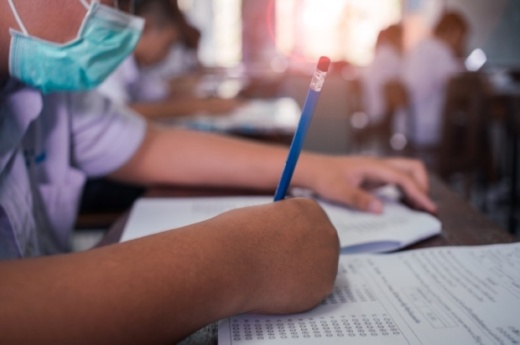Among high schoolers, 27% of RRISD students scored below a 70% in at least one class during the district's first grading period, per the release. During the first nine weeks of the 2019-20 school year, 15% of high schoolers scored below 70% in one or more classes.
A more significant spike was documented among middle schoolers, with 23% of middle schoolers scoring below 70% in at least one class during the first nine weeks as compared to 8% last fall.
“Now more than ever we are promoting grace over grades, for both our teachers and students, providing teachers additional time to turn grades in and offering students multiple opportunities to improve their grades and turn in missing assignments,” Superintendent Steve Flores said in the release. “Students are learning in a new environment, on an unfamiliar platform and during a time of upheaval and uncertainty. We knew the inevitability that grades would be affected. Now, we must employ new strategies to repair learning loss and help our students continue to grow academically.”
Among all RRISD classes during the first nine weeks, 88% of middle schoolers and 89% of high schoolers passed with a 70% or above, per the release.
Mandy Estes, the district's chief of teaching and learning, said the data will be used to help inform instruction practices moving forward.
“We are facing the same challenges schools everywhere are dealing with, and we know districts across Texas are reporting significantly lower passing rates in the first grading period this year compared to last year,” Estes said in the release. “Campuses are working diligently to reach out to struggling students with intervention strategies and additional support. We are confident that as students and teachers become more familiar with the learning platform, grades will improve.”
A different testing measure was used during the 2019-20 academic year for elementary school students, per the release. Under current benchmark testing, student reading levels slightly increased in kindergarten; were roughly the same for first- and second-graders; and were lower among third-, fourth- and fifth-graders.
- Kindergarten: 76% scored on level (slightly higher than 2019 levels, not listed)
- First grade: 62% scored on level (within 2% of 2019 scores)
- Second grade: 72% scored on level (within 2% of 2019 scores)
- Third grade: 69% scored on level; 81% scored on level in 2019
- Fourth grade: 74% scored on level; 86% scored on level in 2019
- Fifth grade: 75% scored on level; 88% scored on level in 2019
- Kindergarten: 89% scored on level; 71% scored on level in 2019
- First grade: 75% scored on level; 65% scored on level in 2019
- Second grade: 76% scored on level (within 2% of 2019 scores)
- Third grade: 86% scored on level; 80% scored on level in 2019
- Fourth grade: 83% scored on level (within 2% of 2019 scores)
- Fifth grade: 76% scored on level; 88% scored on level in 2019





